For two countries who share the same language, more or less, the differences between the education systems in the U.S. and the U.K. are striking. To find out more, this month’s guest blogger is Rebekah Humphrey-Bullen from TpT store LittleStreams. I am very pleased that she will provide us with some information about what it’s like to attend school in England.
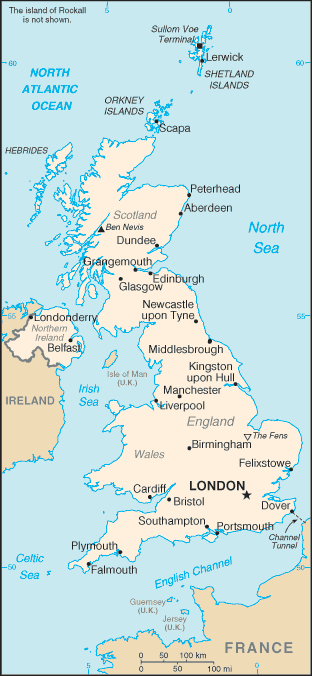 |
| The United Kingdom; source: The CIA World Factbook |
In her own words:
Introduction
I am currently a private tutor, so I work one to one with students who find maths and English hard. Therefore I tutor all ages from 7 to 16. I started making resources for my students, and below is an example of the types of materials I use with my students.
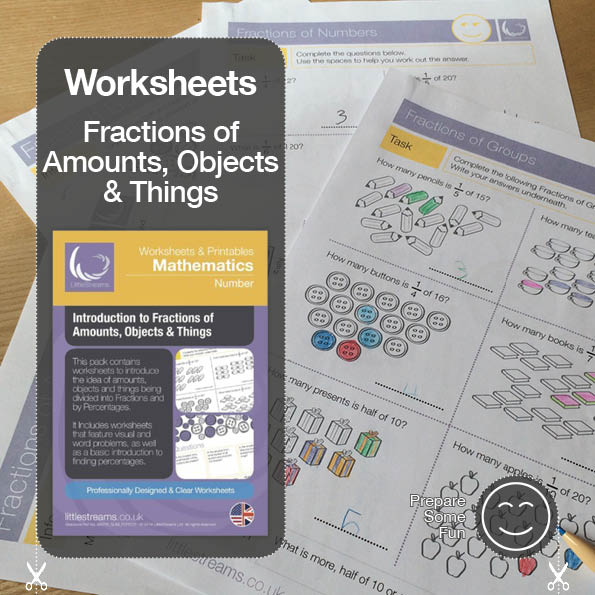 |
| You can find this resource HERE |
I was secondary trained, though, and I taught maths to years 7-11 (ages 11-16). I now am a school governor, which is like a leader, of a primary school. It’s not the same as being the principal (called a head teacher in the UK), instead we are similar to a board of trustees, or shareholders of a company. All schools have to be governed by a board of volunteers, called governors, who oversee the strategic leadership of the school, such as finance, policy decisions and setting the school’s vision. We also appoint the headteacher, and act as a board for them to be accountable to.
Structure of U.K. Schools
School starts in year 1 at the age of 5, though many start in reception at age 4. They attend primary school, which is split into Infants for years 1 and 2 and junior for years 3-6. These are called Key Stages 1 and 2.
Then they go to secondary school. Some counties have a different system and use middle school, but that’s dying out now. From the age of 11-16 they attend secondary school. Year 7-9 are Key Stage 3, and years 10 and 11 are Key Stage 4. At this point they do their GCSE’s (General Certificate in Education). These are very important qualifications. Most students do about 12 GCSE’s. They have to take English, mathematics and science. You normally have to get at least 5 GCSE grade C’s, including maths and English, to be able to progress on to most courses or get jobs. If you don’t get these, you must retake. The GCSE’s are currently going through a huge change. This year is the last year where students will receive a letter grade. From 2017 exams students will receive a number grade from 1-9 (9 being the top grade), and the exams will be much harder with new content taught.
Students have to stay in some form of education until 18, but they can either do 6th form at their secondary school or local college (college is different from University) and study A Levels, or BTECs, or NVQs–so many choices–or they can go to become an apprentice. There are state schools, called comprehensives, academies and free schools, and Grammar Schools etc., and there are private schools. (Public school is another word for private schools in the UK). Most students attend academies, which are run by companies rather than the government.
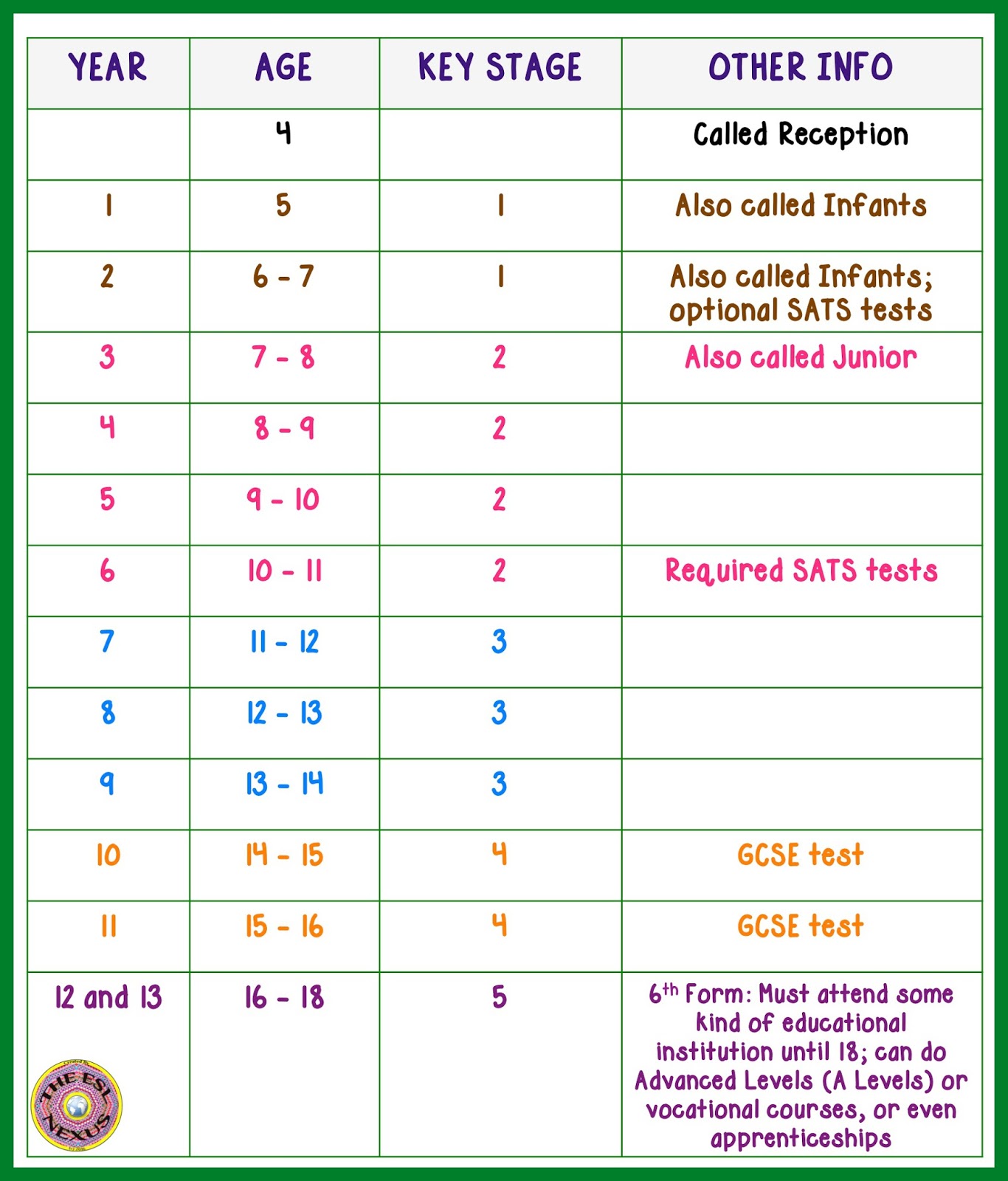 |
| To get your copy of this chart, click HERE; source: The ESL Nexus & LittleStreams |
The School Calendar
School starts in the beginning of September and runs until the end of July. The school year is split into three, with Autumn term ending at Christmas, Spring term ending at Easter and Summer term ending in July. Students also get half term in October, February and May, which is a week off school. Some private schools give two weeks off, but then students have to attend school on Saturdays.
Christmas and Easter are a two-week holiday. May Day is a national public holiday. We used to dance around the may pole on May Day, which is where children dance with ribbons attached to a pole so the ribbons plat around the pole. The 5th November is Guy Fawkes, or Bonfire Night. This is the day we celebrate the capture of Guy Fawkes, who tried to blow up Parliament in 1605.
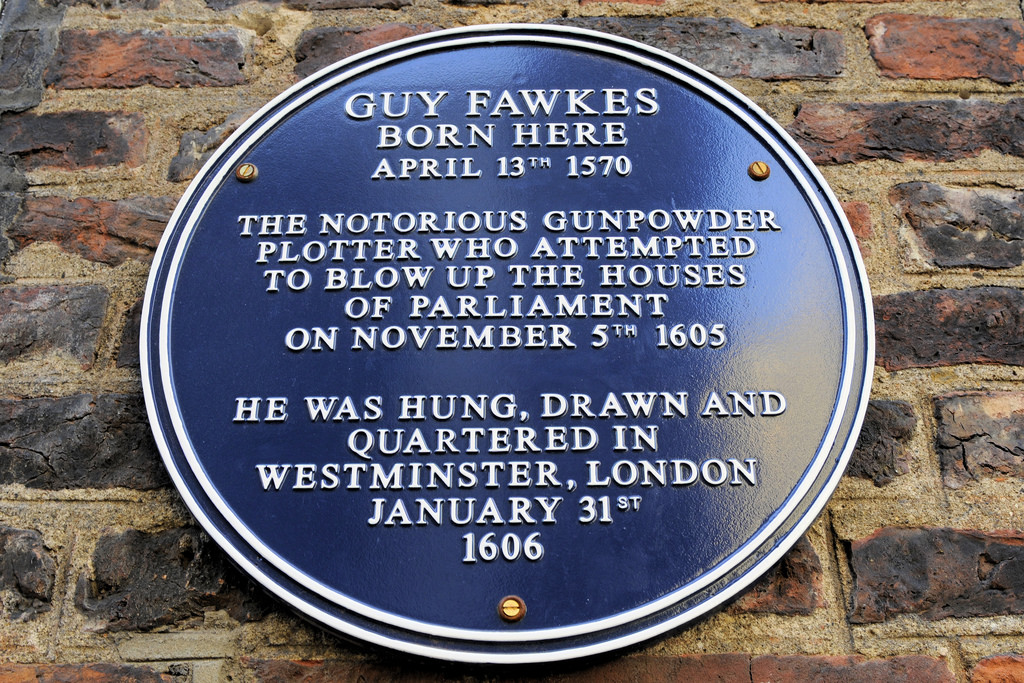 |
| Plaque commemorating Guy Fawkes’ birthplace; source: Flickr, CC by 4.0 |
Curriculum
We have the National Curriculum, which states what has to be taught in all subjects. This is a vague list of what students should know by a certain time, rather than any steadfast rules, although key subjects such as maths, English and science are a lot more structured. The content for mathematics is similar to the U.S. Common Core State Standards, though many of the high school topics are part of the A level maths, which is not a compulsory subject in 6th form.
Requirements for Becoming a Teacher
The most popular way to become a teacher in the UK is to do a course called a PGCE (Post Graduate Certificate in Education) once you have a degree. It’s an intensive year long course with practical experience of teaching. During this time you are a student teacher, and closely monitored. Then you have your newly qualified year, where you are a newly qualified teacher (NQT). This is like an induction period and it is still possible to fail this year. If this happens, you are not permitted to work as a teacher ever again, and you don’t get a second chance to repeat this year.
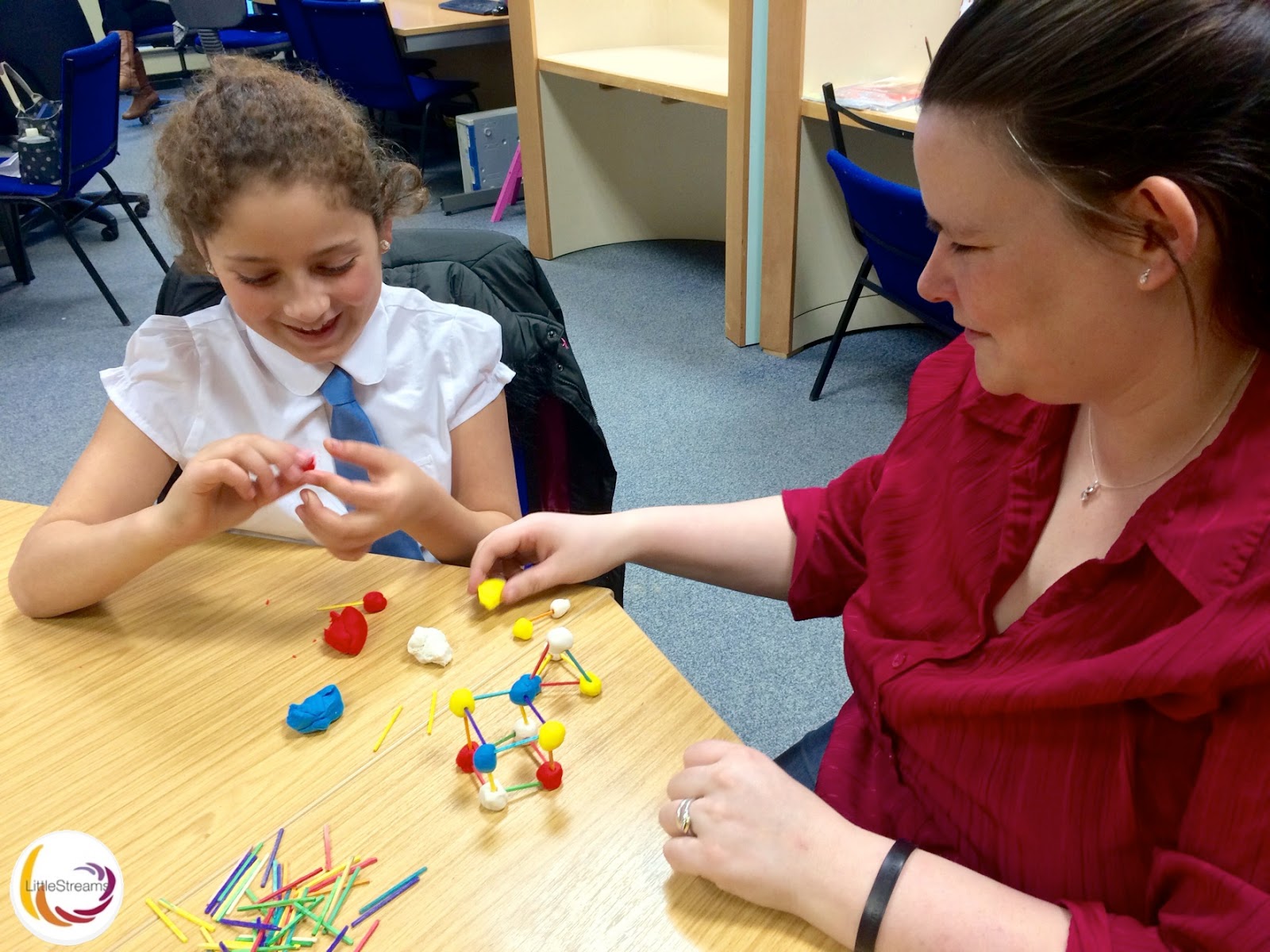 |
| Rebekah and one of her students; source: LittleStreams |
There are other ways in, such as a degree in teaching, which takes a year longer than most other degrees, which is a popular route for primary school teachers, or a schools direct approach where a school hires you as an unqualified teacher and you work in the school to gain your qualification. But however you get in, you have to complete 150 hours teaching. Which ever route you choose, you still have to complete your Newly Qualified Teacher year.
No special additional training is required to teach English; English teachers teach both English Literature and English Language. However, to teach English as a foreign language, there are a variety of different courses you can do. If you teach adults, you don’t even need a PGCE, you can do a different course. Then they are called TESOL (Teaching English to Speakers of Other Languages) or TESL or TEAL (Teaching English as Second Language/Additional Language).
Teaching English
In the UK, English is the native language, so we study English Literature and English language. Part of the curriculum is to look at Middle English, which is surprisingly difficult to read.
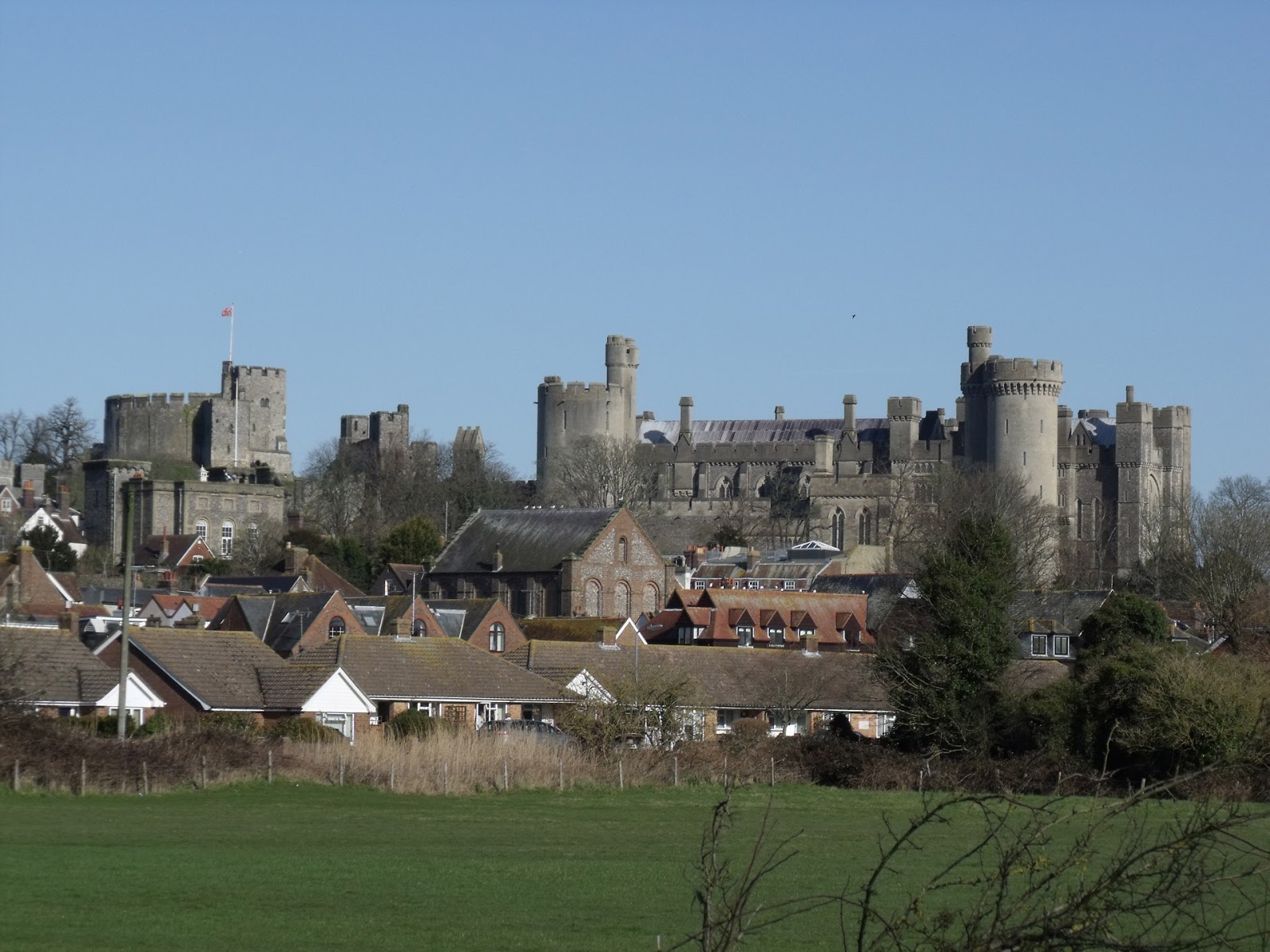 |
| Arundel Castle, West Sussex; source: PublicDomainPictures |
For students for whom English is not their first language (EAL), there are lots of supportive measures put in place, but the general guidelines are the importance of immersive language. I had a boy in my maths class once. He had just come to England from Poland and didn’t speak a word of English. The school got him a teaching assistant who spoke his language. She was able to help him understand what the task was, but it was crucial that he stayed in the main classes as that was the best way to learn the language and to include him. As he had a translator, this meant that in many subjects, such as mathematics, he was able to write in his native language, which proved that he was an exceptionally smart lad.
To teach English as a Foreign Language, you can do a course called TEFL (Teaching English as a Foreign Language). If you teach it in a college or an adult learning centre, this qualification is enough. You don’t need to then get a PGCE.
Testing
There is something called SATS (Standard Assessment Tests). These are done at the end of Key Stage 1 (Year 2, aged 6/7) though it is not compulsory at this age, and again at the end of Key Stage 2 (Year 6, ages 10/11) where it is compulsory. Then when they start secondary school, many students are given the CAT test, which tests their ability to reason etc. This is also not compulsory, though many do it.
In years 10 and 11, ages 14-16, students take their most important exams, the GCSE’s. These are recently going through a shake up — until this year, students are graded from U (ungraded) then G-A*, where C is the expected level most students should achieve. From next year, students will be graded from 1-9, with 9 being considered the absolute top grade. In addition, all levels of education, from reception through to A levels (Advanced levels), have just gotten a lot harder.
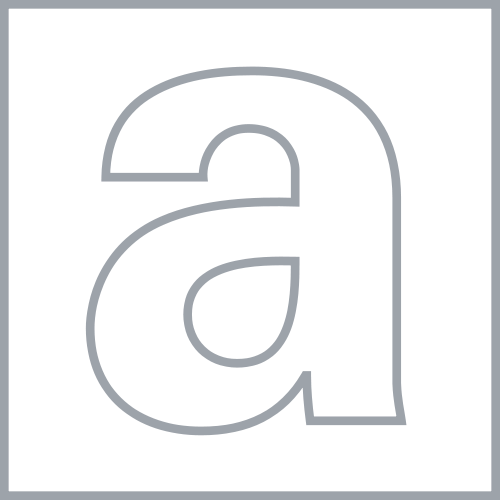 |
| Logo for A Levels; source: Wikipedia |
At the moment, the UK is going through some major changes in the way education works. A lot of teachers, parents and students are unsure of exactly how these will affect students’ GCSEs.
After GCSEs, students can continue the academic route and study A levels where they pick three or four subjects to focus on. This is a two-year program with exams at the end of the course. Or they can study more vocational subjects such as BTEC National Diplomas or NVQs. BTEC stands for Business and Technology Education Council, and NVQ stands for National Vocational Qualification. These tend to be one subject in a lot of detail. For example, I have studied a BTEC National Diploma in Drama and another one in Media. They are also continually assessed via coursework rather than exams. Although these are taught in 6th Form at schools, they are also taught in colleges (which are not the same as universities in the UK), and are not exclusively for students aged 16-19. Many adults also go to college to study these subjects. On the whole, though, BTECs are seen as worth slightly less than A levels, especially if you want to go to University.
Rebekah has many more math resources in her LittleStreams TpT store. Several are card games that teach about various math topics. Check out her free Simplification Switch sampler for Algebra.
 |
| The Union Jack–Flag of the United Kingdom; source: The World Factbook |
Thank you, Rebekah, for describing some aspects of the education
system in England. Becoming a teacher and being a student is certainly
very different in the U.K, even though the language of instruction is
English!
You can find more posts in this series by clicking on these links to read about education in: New Zealand, Australia, Morocco, Sweden, England, United Arab Emirates, Scotland, Quebec (Canada), and South Africa.




